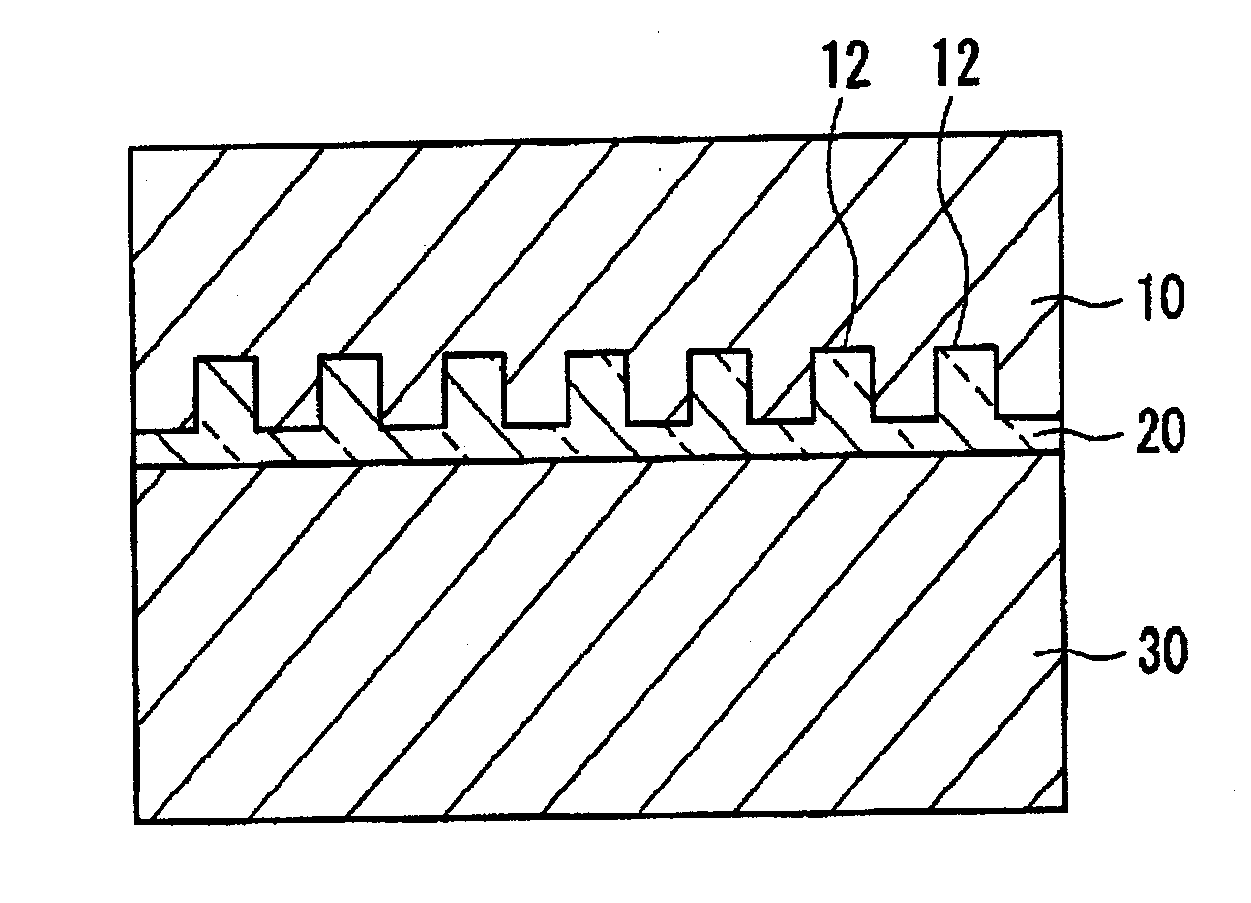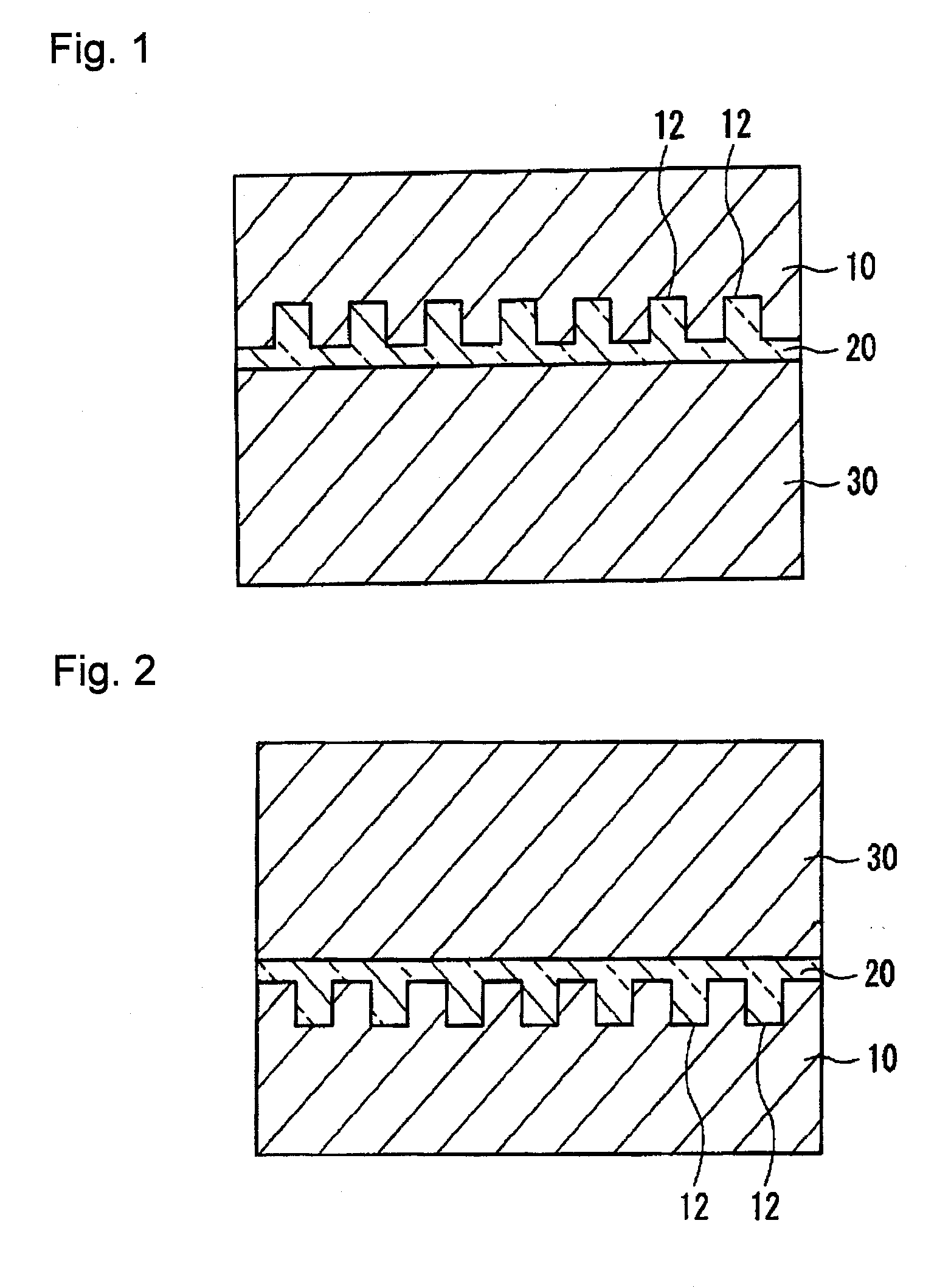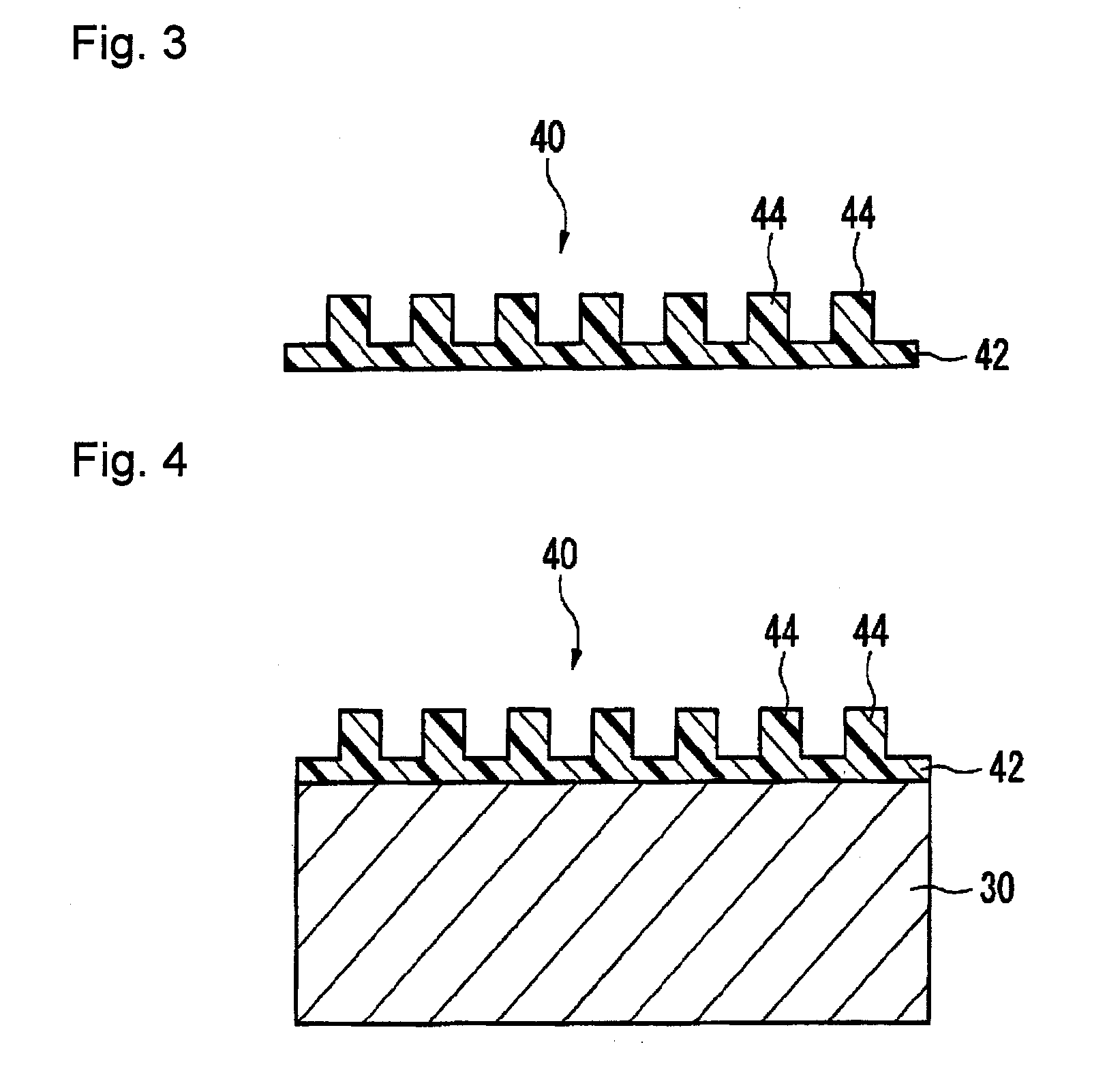Photocurable composition and method for producing molded product with fine pattern
- Summary
- Abstract
- Description
- Claims
- Application Information
AI Technical Summary
Benefits of technology
Problems solved by technology
Method used
Image
Examples
example 1
[0253]In a vial (internal capacity: 6 mL), 1.52 g of the compound (A1), 0.88 g of the compound (B11) and 1.44 g of the compound (C1) were added, then 0.16 g of the photopolymerization initiator (D1) was mixed, and the mixture was subjected to filtration through a 0.2 μm filter made of polyethylene terephthalate (hereinafter referred to as PTFE) to obtain a photocurable composition. The composition of the photocurable composition is shown in Table 1, and the evaluation results are shown in Table 2.
example 2
[0254]In a vial (internal capacity: 6 mL), 1.52 g of the compound (A2), 0.88 g of the compound (B11) and 1.44 g of the compound (C1) were added, then 0.16 g of the photopolymerization initiator (D1) was mixed, and the mixture was subjected to filtration through a 0.2 μm filter made of PTFE to obtain a photocurable composition. The composition of the photocurable composition is shown in Table 1, and the evaluation results are shown in Table 2.
example 3
[0255]In a vial (internal capacity: 6 mL), 1.52 g of the compound (A3), 0.88 g of the compound (B11) and 1.44 g of the compound (C1) were added, then 0.16 g of the photopolymerization initiator (D1) was mixed, and the mixture was subjected to filtration through a 0.2 μm filter made of PTFE to obtain a photocurable composition. The composition of the photocurable composition is shown in Table 1, and the evaluation results are shown in Table 2.
PUM
| Property | Measurement | Unit |
|---|---|---|
| Percent by mass | aaaaa | aaaaa |
| Percent by mass | aaaaa | aaaaa |
| Percent by mass | aaaaa | aaaaa |
Abstract
Description
Claims
Application Information
 Login to View More
Login to View More - R&D
- Intellectual Property
- Life Sciences
- Materials
- Tech Scout
- Unparalleled Data Quality
- Higher Quality Content
- 60% Fewer Hallucinations
Browse by: Latest US Patents, China's latest patents, Technical Efficacy Thesaurus, Application Domain, Technology Topic, Popular Technical Reports.
© 2025 PatSnap. All rights reserved.Legal|Privacy policy|Modern Slavery Act Transparency Statement|Sitemap|About US| Contact US: help@patsnap.com



